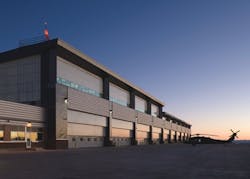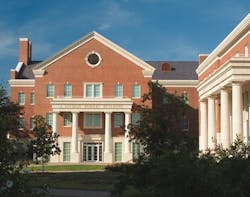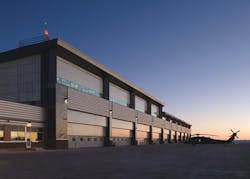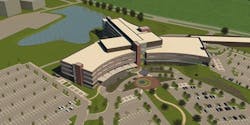Newsworthy
The Department of Environmental and Civil Engineering at the SMU School of Engineering in Dallas has introduced an interdisciplinary program to enhance the expertise of students and working professionals who seek to specialize in the environmental, economic, and social tenets of sustainable design.
In its commitment to greening Dallas and the greater global community, SMU School of Engineering pushed its sustainable design certificate from inception to implementation in just 4 months. The certificate, one in a planned series, will attract four key audiences: current environmental and civil engineering students; advanced degree holders; professionals in the fields of engineering, architecture, and design who seek additional certification; and anyone who holds a 4-year degree and is interested in sustainable design.
Air Force Facility Designed with Sustainability in Mind
The Army Aviation Support Facility (AASF) at Buckley Air Force Base in Denver has been awarded for its sustainable design. Outstanding use of daylighting, energy efficiency, and sustainable, environmentally friendly design have garnered the "Best Sustainable Facility" award from the U.S. Air Force. The facility was designed by Denver-based Coover-Clark & Associates.
Adding to the project's sustainability were the use of renewable, environmentally friendly building materials; integrated xeriscaping and drought-tolerant plants; and the reuse of excavated soil for landscaping. The facility's strategy for daylighting includes translucent wall panels, skylights, and a light shelf to bounce natural light into work areas. The use of natural light in this building saves more than $10,000 per year.
Texas Children's Hospital Breaks Ground in Houston
The new Texas Children's Hospital West Campus project has begun in Houston. The hospital is currently among the nation's largest suburban pediatric hospitals and is designed, equipped, and staffed exclusively to treat children. Featuring a park-like setting with a 55-acre site, the new medical complex, totaling 490,000 square feet, will be built in phases at an estimated cost of $220 million. With the completion of the outpatient clinic building and the inpatient facility in 2010, West Campus will have an estimated workforce of 600 to 800 medical professionals and support staff.
The area's current pediatric population is projected to grow by 51 percent to 400,000 by 2015. The new facility will incorporate interior and exterior evidence-based design elements that promote healing, such as natural light, views of water and nature, child play areas, and outdoor, park-like settings for patient and family use. The project is being designed and constructed following LEED principles.
Energy Guidance Offered for Warehouses
The latest publication from the American Society of Heating, Refrigerating and Air-Conditioning Engineers' (ASHRAE) Advanced Energy Design Guide series helps direct the construction of warehouses by using off-the-shelf technology that can cut energy use by 30 percent or more annually.
The Advanced Energy Design Guide for Small Warehouses and Self-Storage Buildings offers guidance to building design teams on how to use the best design practices to create energy-saving warehouses. Available for free in electronic format (www.ashrae.org/freeaedg), the guide covers an integrated design process for delivering energy-efficient warehouses, as well as sets of prescriptive requirements for each climate zone. Case studies of exemplary warehouse designs are provided, as well as detailed, how-to design guidance to help construction teams.



